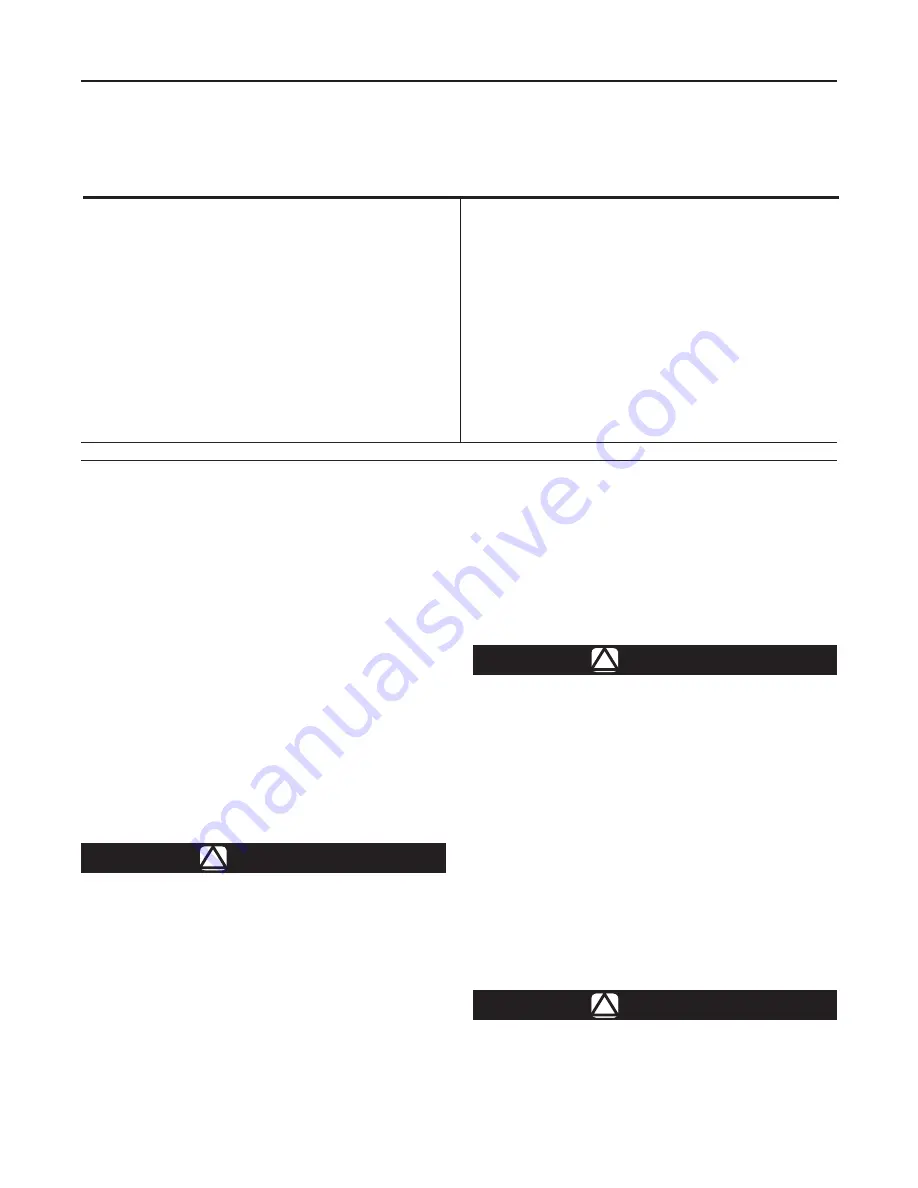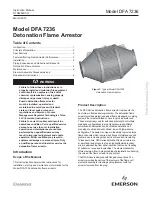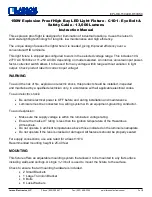
Specifications
The Specifications table lists the specifications for the detonation flame arrestor. The following information is stamped on the
nameplate attached to the arrestor: model number, flange size and rating, maximum initial operating pressure, gas group, date
of manufacture and serial number; other identification and customer tag number are optional.
Construction
Model DFA-7236
Gas Group
D (IIA)
Flange Sizes and Rating
36 in. CL150
Housing Size
72 in.
Maximum Experimental Safe Group (MESG)
0.035 in. / 0.90 mm for Group D Vapors
Maximum Initial Operating Pressure
(1)
17.7 psia / 1.22 bar a
Temperature Rating of Fiber Gasket
(1)
450°F / 232°C
Maximum Operating Temperature
140°F / 60°C
Burning Rating
5 minutes
Housing Material
Carbon steel
Element Material
304 Stainless steel, 316 Stainless steel
Certification
None
1. The pressure/temperature limits in this Instruction Manual and any applicable standard or code limitation should not be exceeded.
Principle of Operation
Detonation flame arrestors prevent flame propagation as it
enters the exposed side of the unit to the protected side by
absorbing and dissipating heat using spiral wound crimped
ribbon flame cells. This detonation flame arrestor utilizes
an element assembly that dampens the high velocities and
pressures associated with deflagration and detonations while
quenching the flame front. These cells allow maximum flow
with maximum protection.
A detonation flame arrestor has the heat capacity and
structural design to withstand all dynamic conditions of
flame propagation and still stop the flame. A detonation
flame arrestor is used when the flame can be in any of the
deflagration or detonation states of flame propagation.
Factors Affecting Flame
Arrestor Performance
Gas Group
WARNING
!
Methanol is classified as a Group-D (IIA)
vapor. However, our lab tests indicate that
methanol exhibits characteristics unlike
other Group-D (IIA) vapors under certain
conditions. We therefore recommend that an
arrestor rated for Group-C (IIB3) vapors be
specified for methanol service.
The type of gas in the system determines its gas grouping
and therefore predetermines the type of arrestor element
required. The element must be designed to accommodate
the specific gas group that could possibly ignite and
propagate in the system. The more explosive gases require
the flame cell to absorb the heat more quickly and efficiently.
The International Electrotechnical Commission (IEC) groups
gases and vapors into Groups IIA through IIC categories
depending on a number of factors including the Maximum
Experimental Safe Gap (MESG) of the gas. The National
Electrical Code (NEC) groups gases into A, B, C, D and
G.M. categories.
Maximum Experimental Safe Gap (MESG)
WARNING
!
Verify that the detonation flame arrestor being
installed has the appropriate gas group rating
for your process. This information is included
in the nameplate attached to the element
housing. Do not remove or alter this nameplate.
The Maximum Experimental Safe Gap (MESG) is the
measurement of the maximum gap between two equatorial
flanges on a metal sphere that prevents a flame from being
transmitted from the sphere to the surrounding flammable
mixture. MESG is dependent on gas composition. The
stoichiometric mixture (the ideal air/fuel ratio for the most
efficient combustion) is used to determine the minimum
MESG for a given gas.
Maximum Initial Operating Pressure,
Detonation Rating and Burn Rating
CAUTION
Unlimited burning should not be allowed in
any flame arrestor, regardless of its rating.
If burning can occur for a period exceeding
5 minutes starting at ambient temperature,
2
Model DFA 7236
North America
Only


























